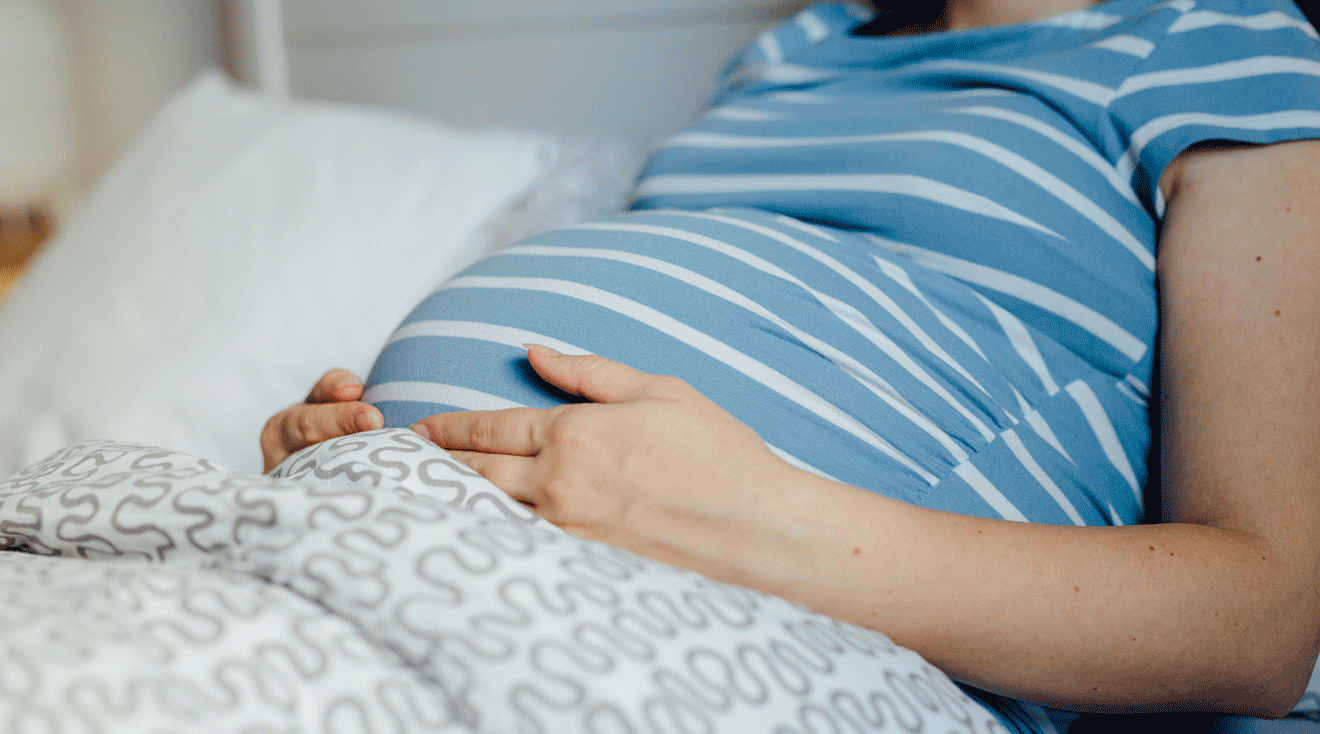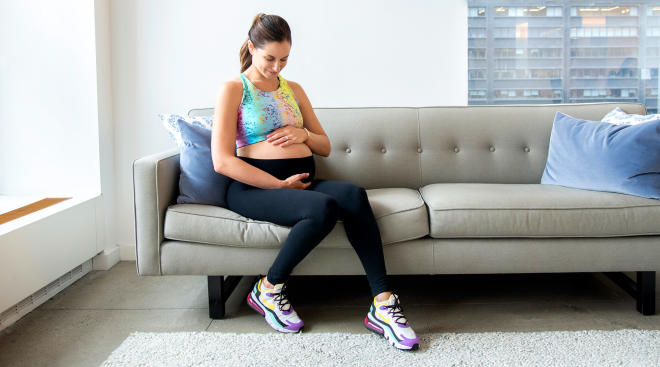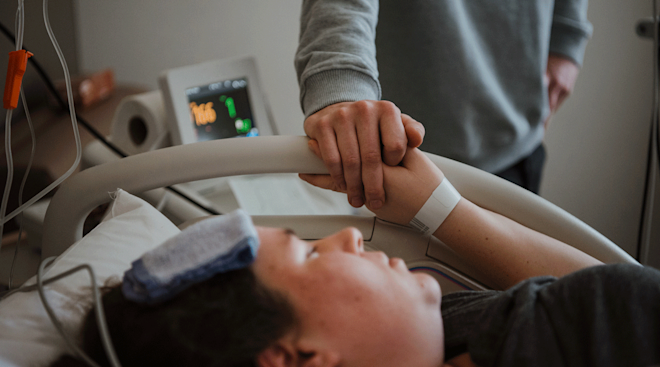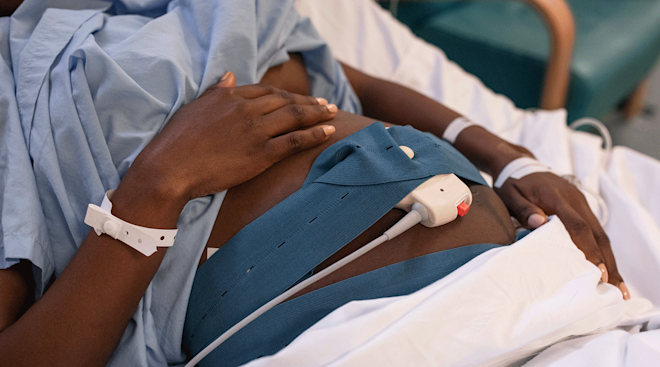How to Do Perineal Massage to Prepare for a Vaginal Delivery
Giving birth is an incredible experience, but there are a lot of things that can happen to your body during the sometimes grueling process. One less-than-desirable possibility? Tearing while delivering vaginally. According to the American College of Obstetricians and Gynecologists (ACOG), up to 79 percent of women who have a vaginal delivery experience some type of laceration. Since tearing and its aftermath are about as fun as they sound, it’s natural to want to do what you can to lower the risk that it’ll happen to you. One proactive option moms-to-be repeatedly have turned to: perineal massage. But exactly what is perineal massage, how do you do it, what perineal massage tool or oil can you use and–most importantly—will it work? We reached out to ob-gyns for all the answers.
A perineal massage is “a massage in the most superficial area of the vaginal canal that separates the vagina from the rectum,” says Francisco Orejuela, MD, an associate professor of obstetrics and gynecology at Baylor College of Medicine in Houston, Texas.
Using your fingers, you can manipulate the perineal tissue (the spot between your vulva and anus), helping to stretch it and ready it for the pressure of childbirth, says Christine Greves, MD, an ob-gyn at the Winnie Palmer Hospital for Women & Babies in Orlando, Florida,
People perform perineal massage in an effort to reduce the risk of tearing or needing an episiotomy (a small incision made between the vagina and anus) during a vaginal delivery. “It has been used as a strategy to increase the elasticity in the vaginal area and reduce the resistance from the muscles to decrease the amount of tearing during the vaginal deliveries,” Orejuela explains.
ACOG specifically states that perineal massage can lower your risk of tearing during a vaginal delivery, and there is research to support this recommendation. For example, one Cochrane review analyzed four trials of 2,479 pregnant women. Some did a perineal massage starting from 35 weeks before giving birth, others did not. The women who did perform perineal massages were 9 percent less likely to tear during birth and 14 percent less likely to need an episiotomy. Orejuela points out that the change in risk of tearing was “modest” but statistically significant. He adds, “these results were seen only in first-time mothers.”
Don’t worry, you don’t need to begin practicing perineal massage the second you get a positive pregnancy test. You’ve got plenty of time to get used to the idea. Perineal massage is usually started around week 35 of pregnancy, according to Greves. Of course, it’s also totally optional—not doing it doesn’t mean you’re guaranteed to tear. But if you want to give perineal massage a go, there doesn’t seem to be a downside.
For more comfort—and to make the massage easier—you may want to use some form of oil. In general, Orejuela says that using water-soluble oils or natural oils like olive, almond or coconut are best. “They are less irritating and better tolerated,” he says. You can also use a vaginal lubricant. Greves advises against using baby oil and mineral oil, as well as warming lubricants, which can irritate your skin.
You don’t need any perineal massage tools other than oil, although you may want to have a hand mirror to help you see what you’re doing, Greves says. Here’s how to do perineal massage:
- Wash your hands.
- Sit with your legs apart and have your back supported.
- Apply a water-based lubricant or perineal massage oil to your fingers.
- Place your thumb or finger about two inches into your vagina.
- Use your finger to gently stretch the wall of your vagina towards the sides.
- While continuing to stretch the wall of your vagina, move your fingers down toward the bottom of your vagina and then the top.
- Keep repeating this.
You can also have a partner help with perineal massage if it feels more comfortable or less awkward, especially whilst navigating around your bump!
How long should a perineal massage last?
In general, a perineal massage should last about five minutes, Greves says.
There’s no set recommendation for how often you should do a perineal massage. “Studies have used different protocols, but they could vary between two to four times per week or even daily,” Orejuela says. But he’s quick to point out that data hasn’t shown that doing perineal massage more often will further lower your risk of tearing or needing an episiotomy.
Tips for partners performing perineal massage
While you can do a perineal massage yourself, you can also have your partner help. Greves offers up these additional tips for your partner for doing the massage:
- Read up on how to do the massage in advance.
- Go slowly.
- Make sure your partner doesn’t feel pain. If they do, stop the massage.
Typically, there aren’t really any disadvantages to trying perineal massage. That said, there are some situations where you’ll want to avoid using perineal massage in pregnancy. For starters, if you have a vaginal infection or an active case of genital herpes, you’ll want to avoid touching the area. What’s more, if you notice swelling or inflammation in the area after perineal massage, or if you’re experiencing significant pain beyond some general discomfort, you’ll want to stop perineal massage and talk to your doctor. If you have a high-risk pregnancy, your provider may tell you not to practice perineal massage, so always check in beforehand.
If you want to try perineal massage but have questions or concerns about it, ask your ob-gyn or midwife at your next appointment. They should be able to help guide you. It’s certainly not required, but, as long as you’re being careful and following the appropriate directions, it can’t really hurt. It may even save you some pain and recovery later on.
Please note: The Bump and the materials and information it contains are not intended to, and do not constitute, medical or other health advice or diagnosis and should not be used as such. You should always consult with a qualified physician or health professional about your specific circumstances.
Plus, more from The Bump:
Christine Greves, MD, is an ob-gyn at the Winnie Palmer Hospital for Women & Babies in Orlando, Florida. She earned her medical degree from the University Of South Florida College Of Medicine.
Francisco Orejuela, MD, is an associate professor of obstetrics and gynecology at Baylor College of Medicine in Houston, Texas. He received his medical degree from Pontificia Universidad Javeriana inColombia.
American College of Obstetricians and Gynecologists (ACOG), Ob-Gyns Can Prevent and Manage Obstetric Lacerations During Vaginal Delivery, Says New ACOG Practice Bulletin, June 2016
Cochrane review, Antenatal perineal massage for reducing perineal trauma, April 2013
Navigate forward to interact with the calendar and select a date. Press the question mark key to get the keyboard shortcuts for changing dates.




















































